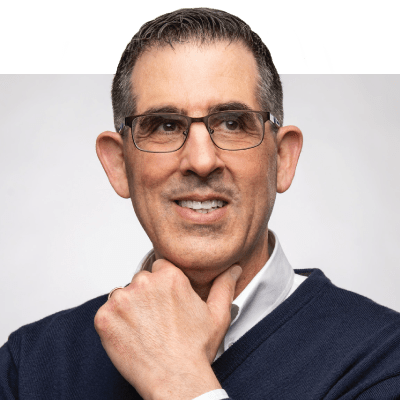Until 2020, supply chain was a term that garnered little attention from anyone beyond those working in the field. That changed when the pandemic triggered delays that continue to impact everything from home repairs to car buying, though.
“Years ago, who cared about supply chain management?” says Nicholas Petruzzi, chair of the Department of Operations and Information Management and the Michael E. Lehman Distinguished Chair in Business. “Now it’s a household name.”
Petruzzi’s research expertise explores economic uncertainty within operations and supply chain management. The key to answering questions about supply chain now, Petruzzi says, is recognizing what defines it: supply and demand, stocks and flows, randomness, and uncertainty. All play a role in what has happened the past two years.

“There are so many pieces and parts and there’s not just one decision-maker.”
— Nick Petruzzi
How did we get here?
Petruzzi compares the worldwide supply chain to a freeway that is busy but moving well—until one car stops. Then there are backups and different traffic flows as drivers look for exits while on-ramps back up and impact other roads. Choke points develop. In the supply chain version, a computer chip made in Taiwan can’t get to a factory in Detroit so a would-be Ford F-150 truck owner in Wisconsin Dells has to wait.
“You can imagine how integrated and vast supply chains are,” he says. “There are so many pieces and parts and there’s not just one decision-maker. Each part of the supply chain is making its own move.”
Because of worldwide pandemic-related shutdowns, industrial demands shifted to consumer demands overnight, Petruzzi says. For example, toilet paper suddenly needed to be packaged and shipped to grocery stores rather than office buildings, and demand for food shifted from restaurants to households. That upended a system that has no central control. The global supply chain, like a freeway that may or may not move smoothly depending on what the cars do, is a collective set of autonomous choices.
“It’s not just supply being equal to demand, it’s supply and demand being in the same place at the same time,” he says.
Why do issues remain?
What we’re experiencing now with the supply chain are ripples of problems that began many months ago.
“We continue to adapt,” he says. “Companies are catching up, but the pain points are going to keep changing.”
Rental cars are an example of moving pain points. Rental car companies sold their fleets when no one was traveling. When demand returned, there were fewer cars to rent and companies couldn’t buy new ones because of production challenges such as those with the computer chips.
The Great Resignation plays a role too, Petruzzi says. If a delayed ship finally gets through a port, a shortage in truck drivers may mean that there is not a truck available to haul the ship’s contents to their next destination.
“It’s not unlike the 2008 financial crisis where problems in one area created problems throughout because the systems are so integrated,” he says.
What will change moving forward?
The pandemic has been a stark reminder of how important it is to prepare for uncertainty. If a business is planning for the next pandemic they’re already in trouble, Petruzzi says, because they need to plan for what they don’t know is coming.
“The best-laid plans and the best systems are prepared for the unknowns,” Petruzzi says. “That’s real responsiveness and agility. How do we prepare for the unknown unknowns?”
A big key for businesses, Petruzzi says, is to pinpoint exactly what is causing delays and to make a plan for what they can do instead.
Another unknown that will impact the future supply chain is consumers. Will the pandemic permanently change consumers, their habits, and their priorities? Consumers might, for example, care less about lower prices and more about social responsibility or supporting their communities.
New priorities could adjust the supply chain, Petruzzi says.
“Once the supply chain is aligned to do what the world demands, it will be a matter of who can do it good, better, best,” he says. “The redesign is going to come from what we care about.”